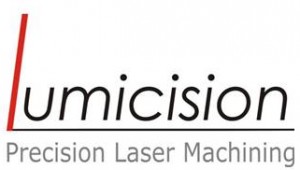
Definition: A group of methods in which laser is used for carving on metals.
Laser engraving is a method for carving different types of shapes and images using laser. The basics of laser engraving are based on the fact that the laser beam in some way changes the optical appearance of the surface to which it is leaked. This process can be done by a variety of mechanisms:
Laser engraving; Sometimes a layer of colored surfaces is removed.
- Metal melting that improves and reduces surface structure.
- Burning (carbonizing) paper, cardboard, wood or polymer
- Transformation (Ex. coloring) of the color of the seeds (industrial laser additives) in the plastic materials
- Expansion of a polymer, if some additives are steamed.
- Create a new structure like small bubbles
Using laser scanning (with two moving faces), vector or hash-like, it is possible to quickly write letters, signs, barcodes and other graphic symbols. Another method is to use a mask printed on the workpiece (engraving projection, masking engraving). This method is simple and fast (applicable to the animated workpiece) but has less flexibility than scanning.
Laser engraving has a lot of applications:
Add product code, date of consumption and the like on food packages and bottles
Add traceable information for quality control
Engraved printed circuit boards (PCBs), electronic equipment and cables
Print logo, barcode and other information on the product
In contrast to other engraving technologies, such as inkjet printing and mechanical engraving, Laser engraving has beneficial results, such as high process speed, low cost (non-consumables), high static quality and robustness of results, non-contamination, ability to write a lot of shapes. Small and flexible flexibility in automation.
Plastic materials, wood, thin cardboards, paper, leather and acrylics are usually carved out with low CO2 lasers. For metal plates, these lasers are not suitable for their low wavelength absorption (10 micrometers). Wavelengths in the 1 micrometer range are Nd: YAG lasers, which are suitable for this type of diode or luminaire (usually Q-switch) or laser lasers operating in this range. The common laser power used for engraving is between 10 and 100 watts. Lower wavelengths such as 532 nm, which can be obtained by doubling the frequency of yogurt lasers, can be useful, but such devices cannot always be economically competitive. For metals like gold, which are absorbed at 1 micrometer, shorter wavelength lasers are required.
Laser requirements for laser engraving
Lasers used for engraving applications must have a series of requirements. Some of the most commonly used requirements are:
- The laser should reach a maximum optical density on the piece (the engraving process has a certain threshold, which does not yield the appropriate results even with several pulses underneath). This requires an appropriate combination of power or pulse energy and the diameter of the beam at the point of focus. Also, the pulse width or time is also affected. Extremely high concentrations for high separation, along with the logical distance of the workpiece, are required from the laser, which means high radiation quality.
- For fast processing, the laser needs a high pulse repetition frequency with high pulse energy, which indicates a moderate power (in certain regimes, the repetition rate of the Qswitch lasers is limited to the maximum laser power, and in some other modes with a pulse width available And laser dynamics is limited).
- In some cases, the Q-switch pulse process should be turned off for some time. After clearing, the first is a high energy pulse that degrades the quality of the engraving.
The laser layout should be compact and does not require a sophisticated cooling system. Cooling is preferred by air and is often possible. - The overall cost of the device should be modest: not only the installation costs must be low, but also the costs of maintenance and lifetime should also be reasonable.
- Because the industrial environment is harsh, a robust laser design is required to provide reliable performance.
Due to the special conditions, different types of lasers can be used for engraving. For example, vanadium Q-switched lasers are very suitable for pulse repetition rates above 100 kHz. Fiber lasers (which have a master oscillator power amplifier) are flexible in terms of the pulse repetition rate and pulse shutdown, but generally higher pulses emit less power and power. In applications that require longer wavelengths and higher average power, CO2 lasers can be appropriate.
